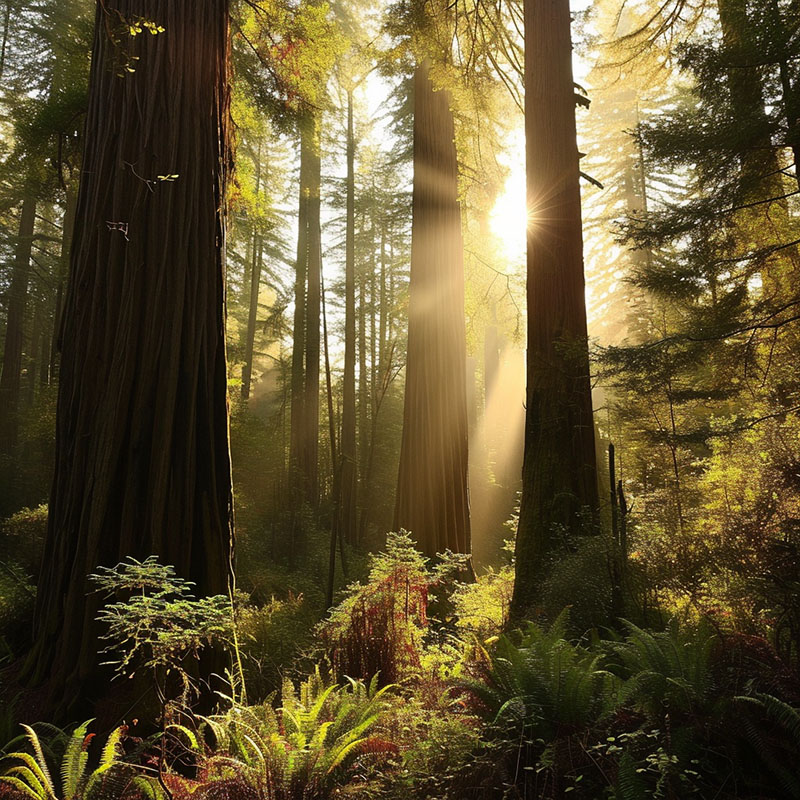
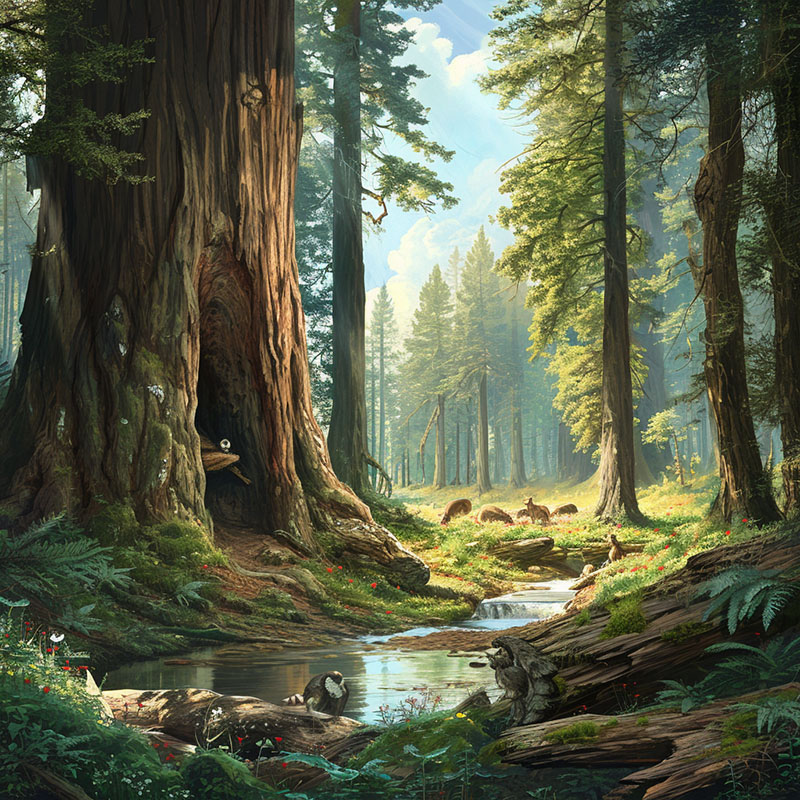
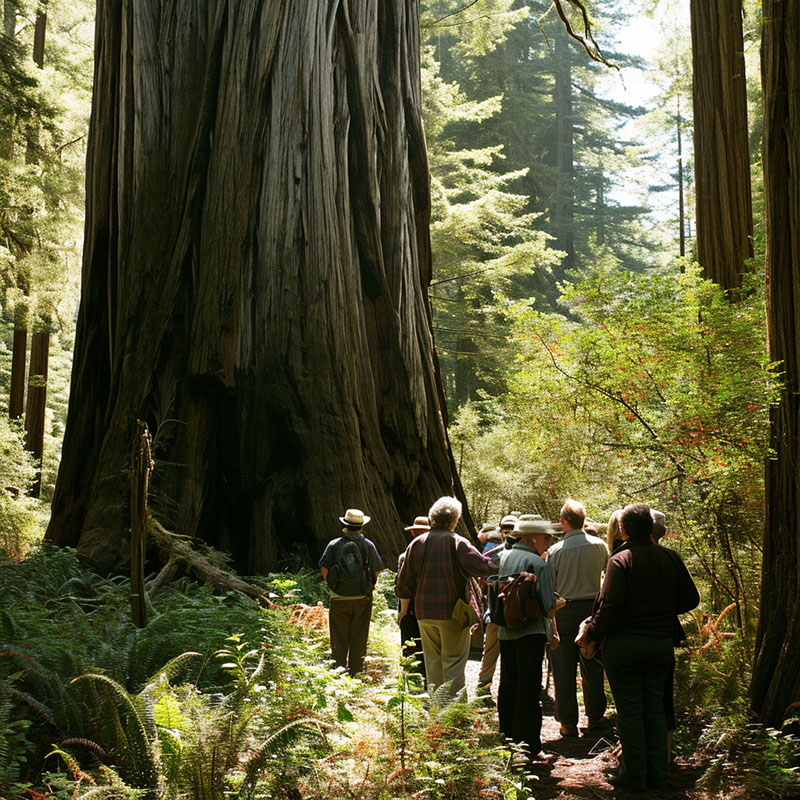
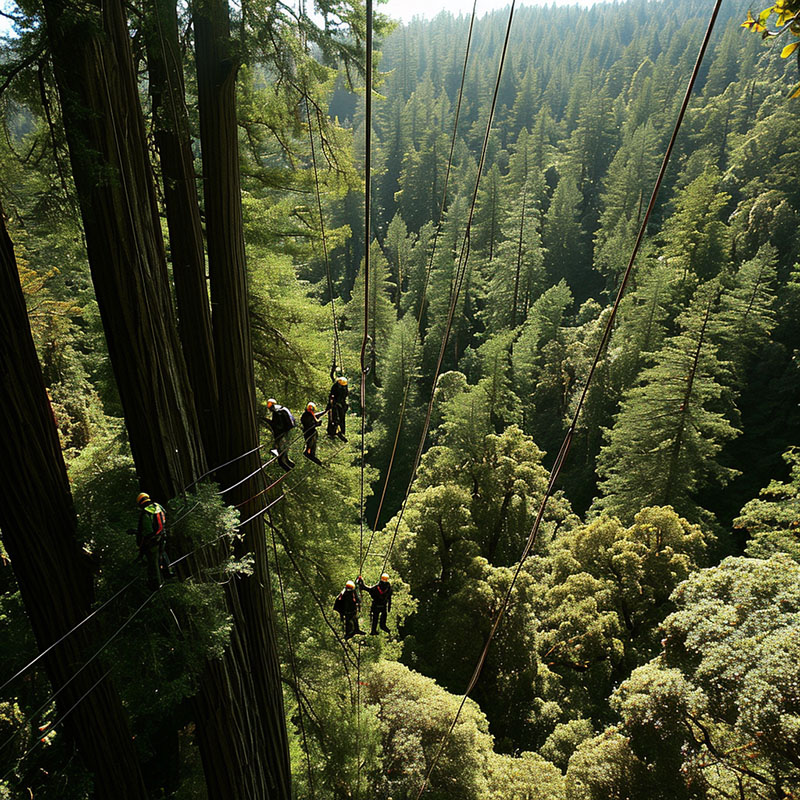
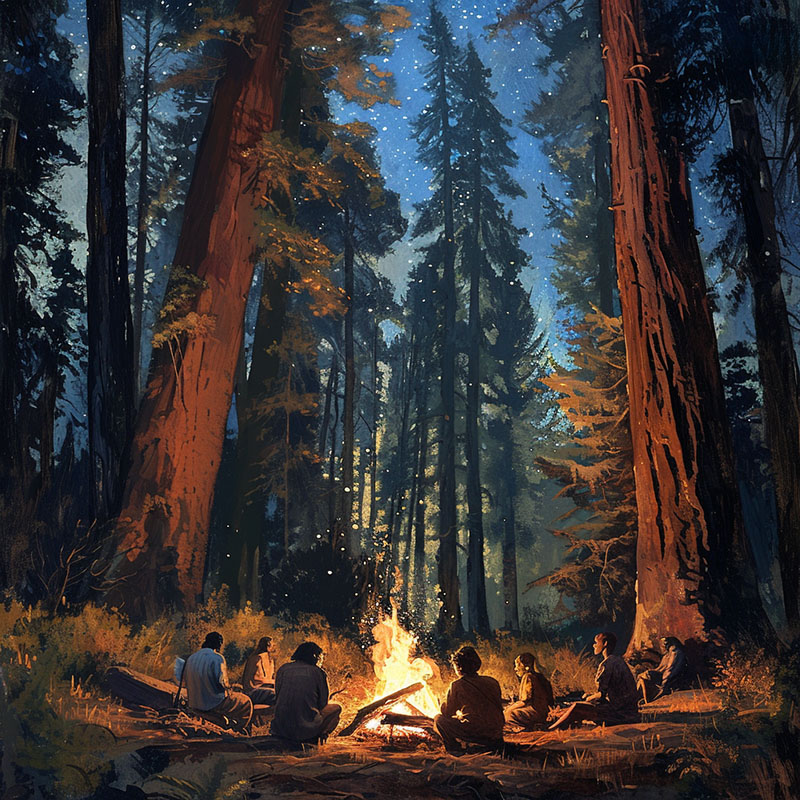
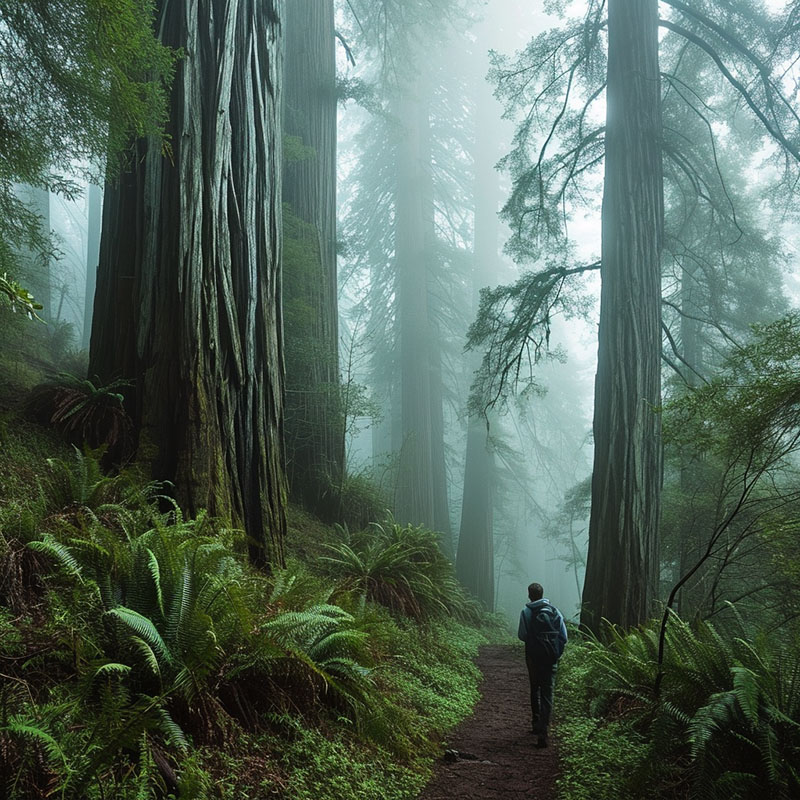
 Once upon a time, Axel Heilberg Island was a very strange place.
Located within the Arctic Circle north of mainland Canada, a full 8/9ths of the way from the equator to the North Pole, the uninhabited Canadian island is far enough north to make Iceland look like a great spot for a winter getaway, and today there's not much to it beyond miles of rocks, ice, a few mosses, and many fossils.
Once upon a time, Axel Heilberg Island was a very strange place.
Located within the Arctic Circle north of mainland Canada, a full 8/9ths of the way from the equator to the North Pole, the uninhabited Canadian island is far enough north to make Iceland look like a great spot for a winter getaway, and today there's not much to it beyond miles of rocks, ice, a few mosses, and many fossils.
The fossils tell of a different era, though, an odd time about 45 million years ago when Axel Heilberg, still as close to the North Pole as it is now, was covered in a forest of redwood-like trees known as metasequoias.
Hope Jahren, an assistant professor of earth and planetary sciences in the Krieger School of Arts and Sciences at The Johns Hopkins University, recently published results that partially demystified Axel Heilberg's vanished forests. Jahren and colleague Leo Sternberg of the University of Miami uncovered evidence that the Axel Heilberg's forests probably received equatorial water and warmth from a prehistoric weather pattern unlike anything in existence today.
 Other challenging mysteries remain, including how a forest could develop given the sunlight it would receive on Axel Heilberg. Because of its closeness to the North Pole both now and in the time of the redwoods, Axel Heilberg spends four months of each year in continuous sunlight and four months of each year in continuous darkness.
Other challenging mysteries remain, including how a forest could develop given the sunlight it would receive on Axel Heilberg. Because of its closeness to the North Pole both now and in the time of the redwoods, Axel Heilberg spends four months of each year in continuous sunlight and four months of each year in continuous darkness.
"We don't have plants that can survive under those conditions today, let alone forests," Jahren says. "For a tree to endure four months of daylight is like you or I going without sleep for four months."
Through a grant from the Andrew Mellon Foundation, Jahren's research group has made three summer visits to Axel Heilberg, excavating hundreds of fossil metasequoias. The fossils are immaculately well-preserved.
"Some of this stuff looks about like driftwood on the beach, but it's 45 million years old," Jahren says. "These fossils are chemically preserved at a level you usually would expect to see in something that's only 1,000 years old."
That's ideal for Jahren, who studies the presence of isotopes of elements like carbon, nitrogen and oxygen in living and fossilized plants. Isotopes are forms of an element that differ only by the addition of one or more subatomic particles known as neutrons. Different isotopes of the same element have different mass, which affects the way plants use them.
Jarhen, the winner of last year's Geological Society of America Donath Medal for most promising young scientist, studies the isotopes to learn more about plants' relationship to weather and climate change. In her group's first major Axel Heilberg results, published in the January issue of the Geological Society's "GSA Today," they measured the presence of isotopes of oxygen and hydrogen in the fossilized metasequoias.
 "The wood of any tree growing anywhere records fairly faithfully the oxygen and hydrogen chemistry of the water the plant has access to through precipitation," Jahren explains. "And there's a great deal of difference between the chemistry of water that arrives at a certain location after being transported [in evaporated form] great distances over land versus the chemistry of water that arrives at a place after being transported over water or not being transported very far."
"The wood of any tree growing anywhere records fairly faithfully the oxygen and hydrogen chemistry of the water the plant has access to through precipitation," Jahren explains. "And there's a great deal of difference between the chemistry of water that arrives at a certain location after being transported [in evaporated form] great distances over land versus the chemistry of water that arrives at a place after being transported over water or not being transported very far."
Jahren and co-author Sternberg chemically compared the fossil isotope levels with those found in water in contemporary precipitation patterns over great distances of forested lands in the Amazon. They were able to show that water traveling from near the equator almost due north across the continents to the vicinity of Axel Heilberg would have oxygen and hydrogen isotope signatures that matched those found in the fossils.
While it might seem mind-boggling to have the equator watering the north pole, Jahren notes that other major climatological differences at the time included the lack of a north polar ice cap.
"It's very hard to explain the isotope chemistry of the precipitation using any other model of water transport," Jahren says. "So we think we've basically solved a piece of the puzzle."
As for the other major piece of the puzzle -- survival of the trees through extended periods of light and dark -- Jahren's group is working to see if the isotope chemistry of the fossils can help them learn how the metasequoias' metabolism compared to those of contemporary plants.
"Did they function similarly to how plants function now?" Jahren asks. "Or did they have strategies that plants either no longer have or no longer employ? Were they fundamentally different? These fossils are really forcing us to expand our ideas of how ecosystems can work."
November 15, 2001 - Catastrophic Redwood Forest Decline
Global Forest Scientists have been afforded a unique opportunity to unravel the mysteries of how water moves through redwood trees, some as tall as 34 story sky scrapers. Once they quantify these water movements, they will begin the arduous, but most necessary, task of addressing why redwoods along the highways and some park boundaries are dying, en masse, from the top down.
"It is a rare opportunity that would not have occurred if Dr. Reese Halter and Global Forest Society had not provided substantial funding to address this severe, catastrophic problem." says Prof. Stephen Sillett, Humboldt State University, California.
December 18, 2000 - Tree Experts Shore Up the Injured Redwood Luna where Julia Butterfly Hill Lived for over Two Years
 After the ancient redwood tree Luna was illegally cut and endangered, tree experts including world renowned arborists, canopy biologists, foresters and engineers are creating lasting solutions that will keep the symbolic tree living and standing tall. This unlikely think tank has produced stunning results that will hopefully allow the resilient redwood to continue living as the beacon of hope and endurance that Luna has become worldwide.
After the ancient redwood tree Luna was illegally cut and endangered, tree experts including world renowned arborists, canopy biologists, foresters and engineers are creating lasting solutions that will keep the symbolic tree living and standing tall. This unlikely think tank has produced stunning results that will hopefully allow the resilient redwood to continue living as the beacon of hope and endurance that Luna has become worldwide.
Julia Butterfly Hill reflects, "Although symbols can be attacked, what they stand for can never be destroyed. Whenever Luna falls into the forest floor, she will feed and grow new life and what she stands for will live on forever. It's going to take people with diverse backgrounds coming together in unity and love to heal the wound in the tree and our world."
 Civil engineer Steve Salzman explained the structural integrity inherent in a redwood tree, "From a structural point of view the trunk of an old-growth redwood tree is over-designed. That is why redwoods more often tip over than snap off. Cutting 60% of the trunk has greatly diminished its ability to withstand wind and seismic loading. We have reinforced the tree with cables and steel bracing to replace some of the strength that has been lost. We will never be able to fully replicate the original strength embodied in the dynamic living system of a redwood tree."
Civil engineer Steve Salzman explained the structural integrity inherent in a redwood tree, "From a structural point of view the trunk of an old-growth redwood tree is over-designed. That is why redwoods more often tip over than snap off. Cutting 60% of the trunk has greatly diminished its ability to withstand wind and seismic loading. We have reinforced the tree with cables and steel bracing to replace some of the strength that has been lost. We will never be able to fully replicate the original strength embodied in the dynamic living system of a redwood tree."
The medical team working on Luna designed a non-invasive cabling system that attaches Luna's massive trunk to three other trees in the protected grove. The grove was protected a year ago and deeded to the land trust Sanctuary Forest under the Luna Preservation Agreement between Julia Hill and Pacific Lumber. Canopy biologists attached a collar 100 feet high in the tree and shot cable to trees that have similar collars and will act as anchor points to stabilize the tree.
Humboldt State University biology professor and lichen specialist Steve Sillett discovered the tallest redwood trees and uses the canopy of ancient redwoods as his laboratory. Steve and his colleague Jim Spickler marveled at the beauty and condition of Luna's crown, "I can't believe Julia lived there for over two years. She obviously lived lightly on the tree."
 Some arborists have suggested cutting off weak limbs in the crown because dieback is expected. Julia laughed, "Based on my experience living in the canopy during raging wind storms, I know that Luna can prune herself!"
Some arborists have suggested cutting off weak limbs in the crown because dieback is expected. Julia laughed, "Based on my experience living in the canopy during raging wind storms, I know that Luna can prune herself!"
Bill DeVos, an award-winning arborist who specializes in securing historic trees, traveled from Vermont to work with Luna's team of experts. "Luna has been an inspiration," says DeVos, "we have no tree species of this stature on the East Coast."
Dennis Yniguez, the President of the American Society of Consulting Arborists and the coordinator of the Luna medical team, comments, "This chainsaw attack has been a grievous injury to Luna. Nonetheless, she is a coast redwood, one of the world's most resilient trees, and forty percent of her systems are still intact. We can expect significant dieback in her canopy, but we can also expect her to stand tall for many more years."